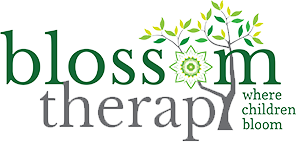For the first time since 2004, the Centers for Disease Control and Prevention (CDC) and the American Academy of Pediatrics (AAP) have revised developmental milestones in the “Learn the Signs. Act Early” program, which helps parents identify autism and developmental delays in their children. The new guidelines raise the percentage of children who meet “typical milestones” from 50% to 75%. Hence, this loosens many milestones and the CDC has determined that some are encouraged (i.e. crawling), instead of a key milestone and building. Many therapists are extremely concerned about these changes. They are concerned about the implications of this more relaxed and “wait and see” approach and that children with needs will be overlooked. ASHA is currently reaching out to the CFC to encourage a revision to the provided milestones and are anticipating an updated in speech and communication related milestones.
How And Why Were These New Milestones Created?
A group made up of eight experts in different areas of child development reviewed and updated the checklists. The checklists, familiar to many parents as part of regular checkups at the pediatrician’s office, previously used 50th percentile milestones, meaning only half of children were expected to achieve the milestone at a given age. The revised checklists will now inquire about milestones 75% or more of children can be expected to achieve at a given age, eliminating unnecessary confusion and alarm while ensuring children who need additional evaluation and resources are properly identified.
The hope is that this change will make it easier to spot children at risk for autism and developmental issues and reduce the likelihood that families and professionals will take a wait-and-see approach if children are missing milestones.
“The earlier a child is identified with a developmental delay the better, as treatment as well as learning interventions can begin,” Dr. Paul Lipkin, a member of the AAP Section on Developmental and Behavioral Pediatrics and Council on Children with Disabilities who assisted with the revisions, said in a news release.” At the same time, we don’t want to cause unnecessary confusion for families or professionals. Revising the guidelines with expertise and data from clinicians in the field accomplishes these goals,” Lipkin added.
What Are Specific Examples Of Modifications In The New CFC List?
– Adding checklists for ages 15 and 30 months; now there is a checklist for every well-child visit from 2 months to 5 years.
– Identifying additional social and emotional milestones (e.g., Smiles on their own to get your attention at age 4 months, shy with strangers at 6 months, claps when excited at 15 months and engages in pretend play at four years of age).
– Removing vague language like “may” or “begins” when referring to certain milestones. All of the milestones listed on the checklists can be easily observed in natural settings, CDC officials said, and they’re described in plain language.
– Removing duplicate milestones. The experts behind the changes said they worked to address concerns that having similar milestones across various ages could be confusing. In addition, they sought to show the progression of skills as children age, when possible
– Providing new, open-ended questions to use in discussion with families (e.g., Is there anything that your child does or does not do that concerns you?).
– Revising and expanding tips and activities for developmental promotion and early relational health.
– Removing crawling as a milestone. The CDC removed this milestone because not all babies crawl; some skip this milestone all together.
– Revising the age in which a child meets the walking milestone from 12 months to 18 months.
-Revising the age in which a child meets the talking milestone from 12 to 15 months.
However, some professionals are not happy with these changes. Some milestones relating to speech and language and fine motor skills have been moved back to older ages and crawling has been removed entirely as a milestone. Some experts fear this will further delay children from receiving timely intervention services and will continue to compound the problem of doctors advising parents to go along with the “wait and see” approach.
Child development expert Dr. Jenny Radesky said, while she’s pleased to see the changes, parents should keep in mind that milestones are not everything. “They are ways that we try to figure out which children might have a developmental delay,” said Radesky, a developmental behavioral pediatrician at the University of Michigan C.S. Mott Children’s Hospital.
Parents should also trust their own knowledge about their kids, Radesky added, including what brings them joy, what overstimulates them, and when parents feel most connected to their children. “These aspects of parent-child relationship are not measured through milestones, but are crucial to children’s mental wellbeing,” she said.
For more information, here is a link to the CDC, outlining developmental milestones broken down between two months and five years: https://www.cdc.gov/ncbddd/actearly/milestones/index.html?fbclid=IwAR0P8rgEvlMcodK3QH87Xr4WYa4qEBEDje-cbNWAOz5rFJwJaNf30dhgtT0C
What Are Blossom Therapy’s Thoughts On These Changes?
We are greatly concerned over these relaxed guidelines, pushed back milestones, or removing some milestones all together. We believe in the importance of providing intervention in a timely fashion to support a child, build confidence, reduce frustration, and gaining important skills in a timely fashion. We believe crawling develops key foundation skills for motor skill and learning opportunities, including, but not limited to: upper extremity strength/stability, bilateral coordination, reciprocal patterns that set the stage for walking, developing arches in hands, and core strength.
Here Are Some Examples Of Speech Milestone Recommendations (Per Widely Utilized Testing Tools) Versus New CDC Guidelines:
15 months
CDC: look toward familiar objects upon verbal request, point to indicate wants
Experienced SLP (speech-language pathologists) and testing criteria from the Rosetti: using eight to ten words to verbally communicate, identify three body parts and begin to understand prepositions, such as ‘out’, ‘in’, and ‘on’.
18 months
CDC: try to say three words besides mama and dada and follow a one-step direction
Experienced SLPs and testing criteria: 15 words in expressive vocabulary, beginning to use familiar two word combination, follow 2 step related requests
2.5 years
CDC: 50 words, including I, me, and we
Experienced SLPs and testing criteria: hundreds of words, three-four word phrases, understanding basic size and quantity concept
If you have concerns for your child’s development or ability to meet milestones, please don’t hesitate to reach out. Blossom Therapy can be reached at 773-857-0006.


